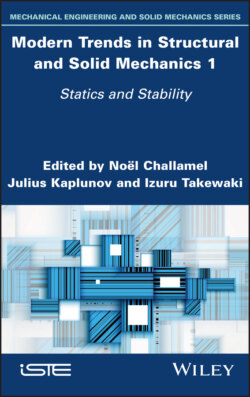Читать книгу Modern Trends in Structural and Solid Mechanics 1 - Группа авторов - Страница 21
1.5. Conclusion
ОглавлениеWe have numerically solved three-dimensional linear elasticity equations by taking the three transverse stresses, three strain–displacement relations in the xy plane and three displacement components as independent variables and using the least-squares method to minimize the residuals in the expressions for these nine variables. For a simply supported rectangular plate, using complete polynomials of degree 4 in the z direction, and at most, 10 in each of the x and y directions provides, with very few degrees of freedom, an accurate solution relative to the exact solutions with error less than 0.3% in each of the nine variables, even for a very thick plate of aspect ratio 2. However, when edges are either clamped or free, a higher degree polynomial is needed in each direction to achieve the same accuracy. For a sandwich plate with ratio β of the axial modulus of the facesheet to that of the core up to 1000 and aspect ratios varying from 2 to 100, accurate results are obtained for each one of the nine variables. For β = 10,000, the accuracy considerably deteriorates with errors approaching 100%.
All of these computations have been done using a Dell laptop. Limitations of the work include satisfying governing equations and boundary conditions in the least-squares sense rather than pointwise.
